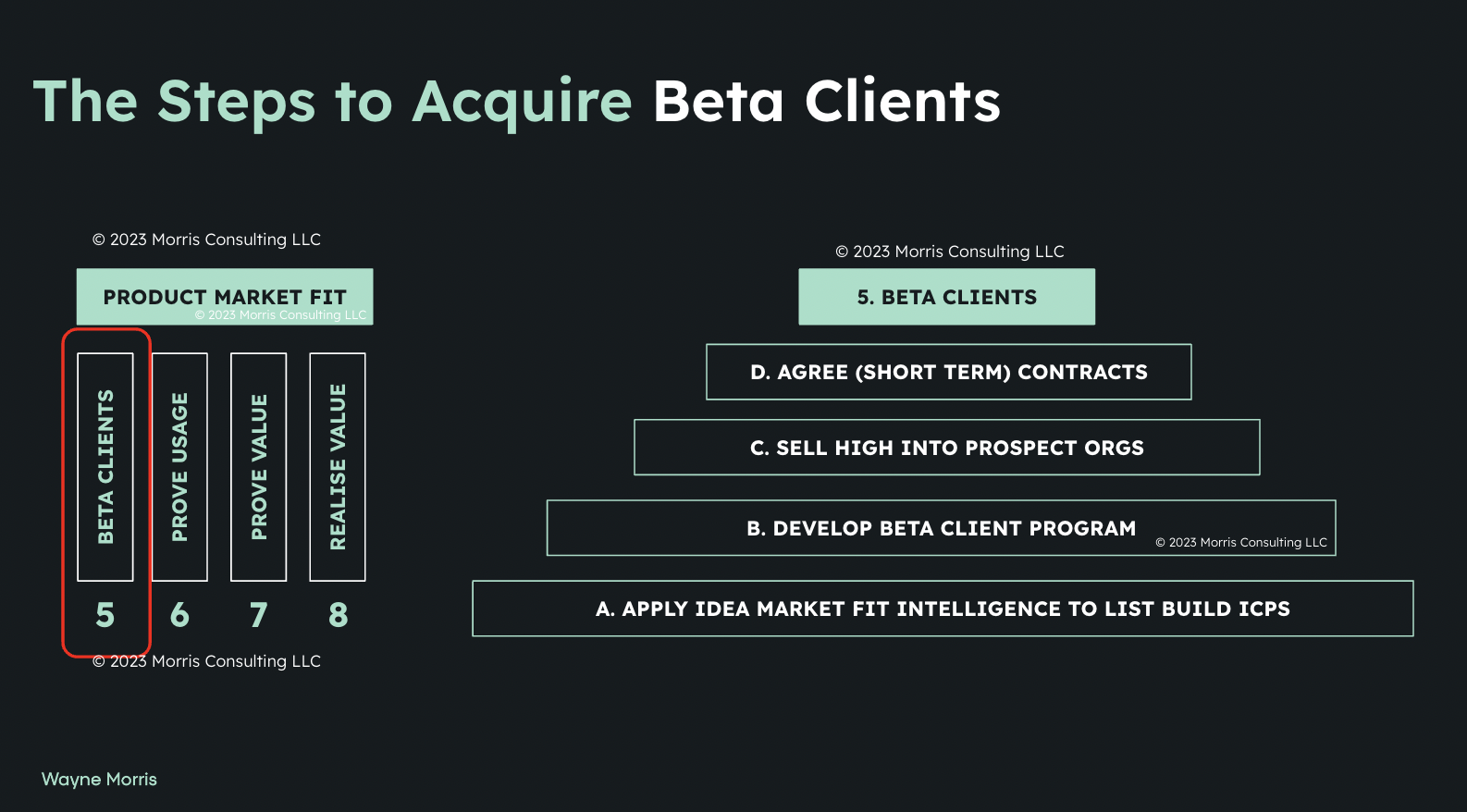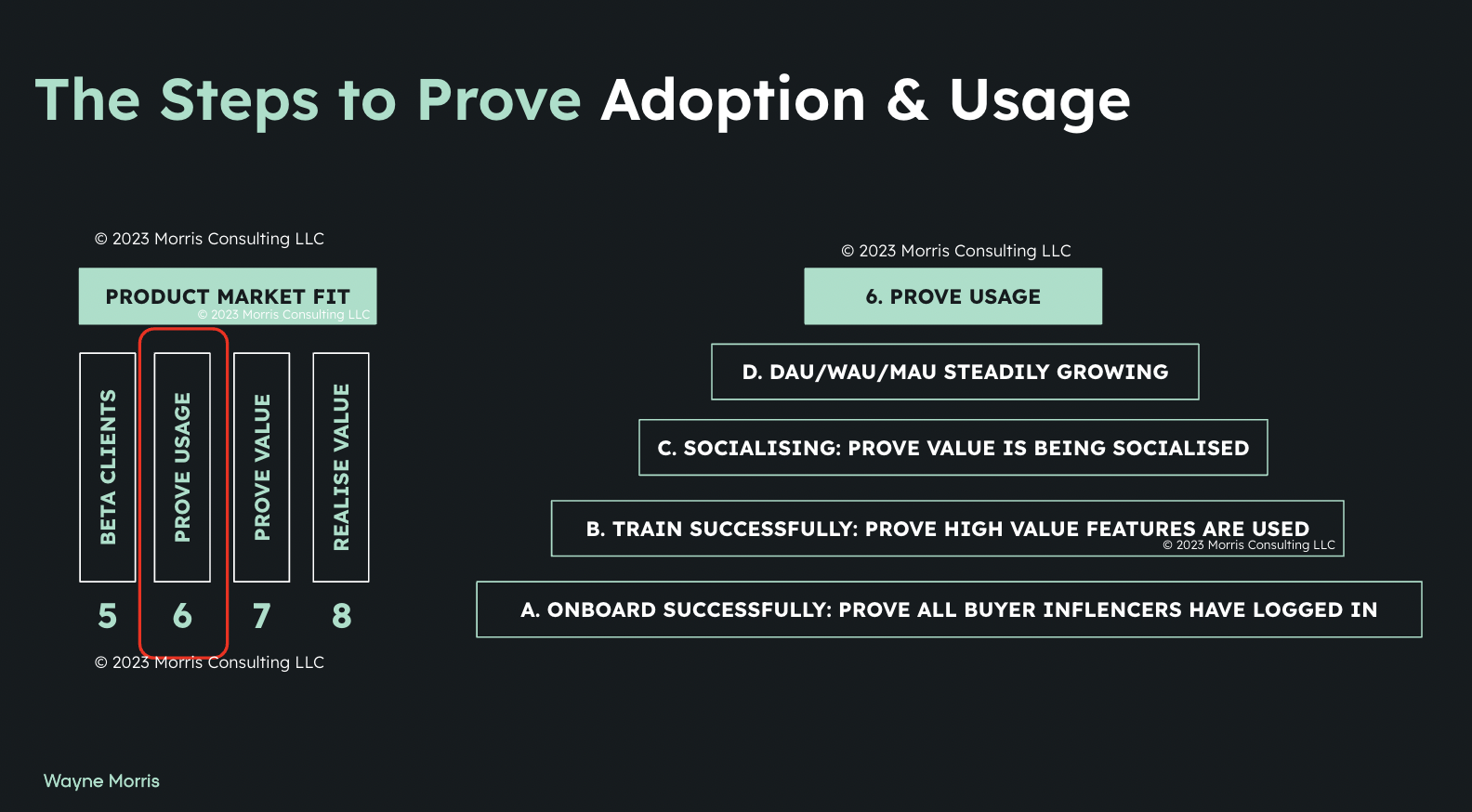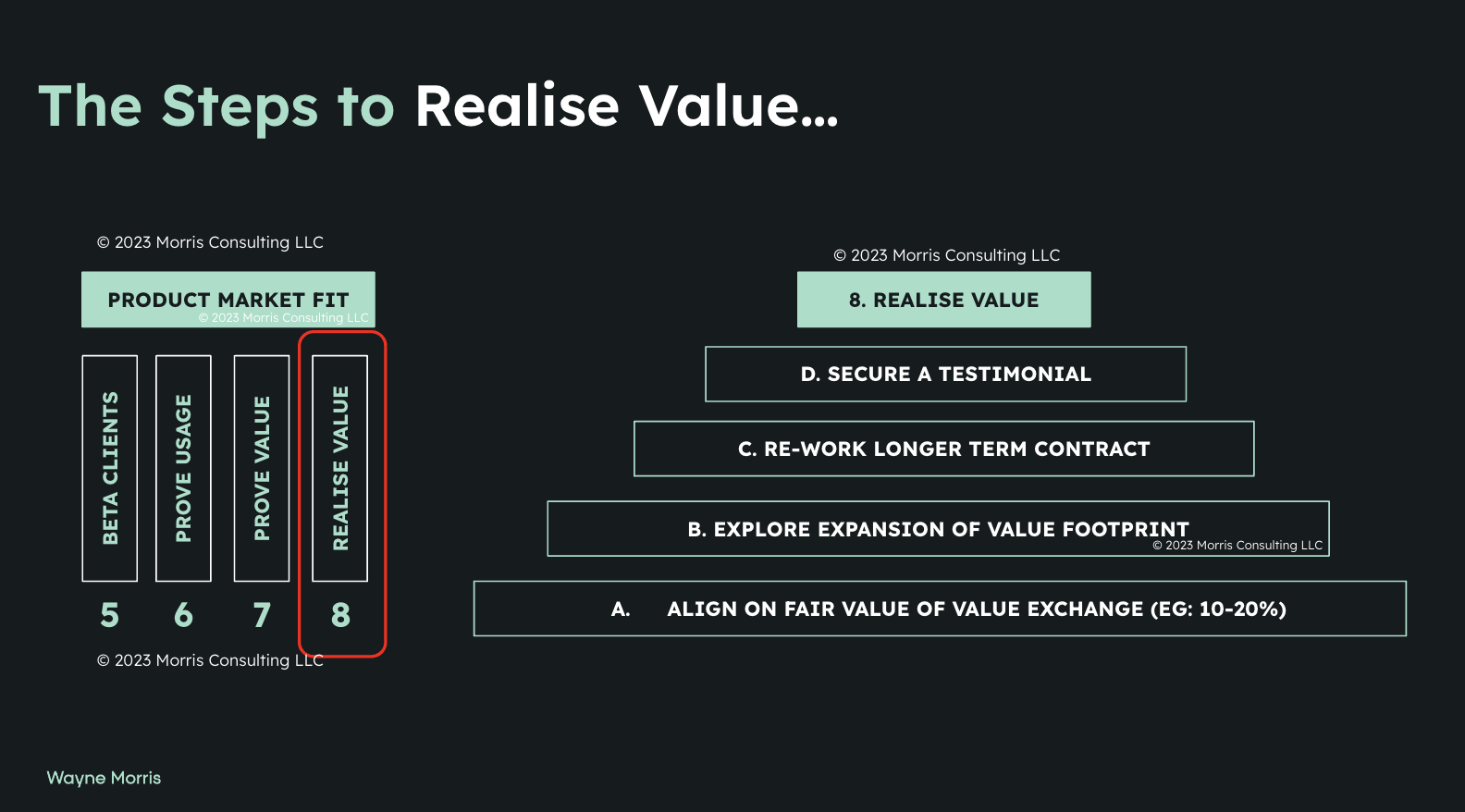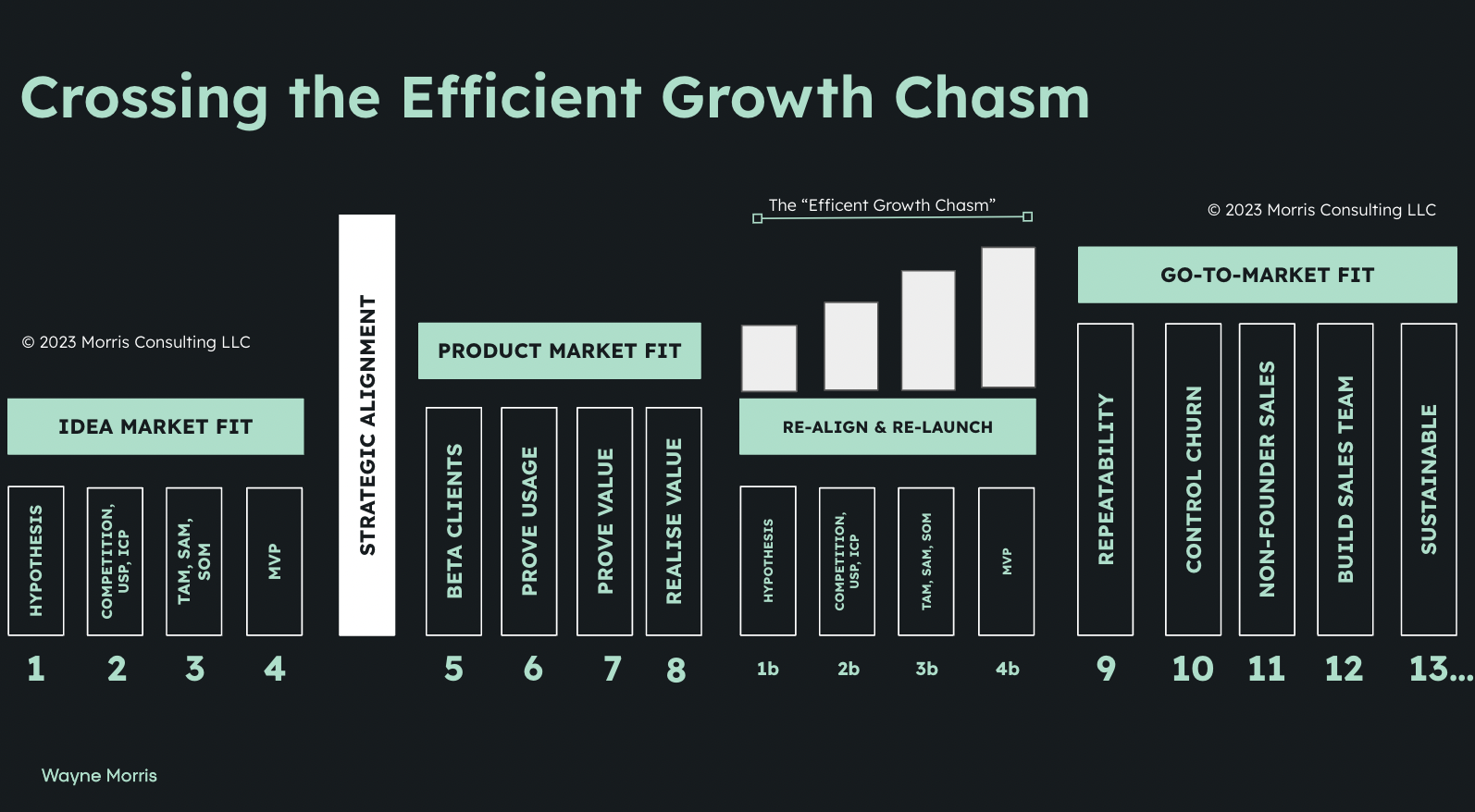
ZT20 #011: Product Market Fit - A Framework for Enterprise B2B SaaS
Sep 07, 2023Product Market Fit - A Framework
One of the most critical phases of growth is achieving product-market fit (PMF). Achieving PMF is the starter gun for fast growth. It’s when a founder gets more confident that every dollar they spend will net at least another dollar in return.
However, achieving product-market fit is open to wild interpretation, and in an upcoming article I rail against this generation of VCs for funding founders who do not have product-market fit, let alone go-to-market fit.
VCs often fund these founders with the intention of the founder spending their $ on building a go-to-market org. However, doing this prematurely often sees founders face years of unnecessary dilution often leading to the death of their startup.
In this article, I outline the framework I have used to align my investors, CEOs/founders and executive teams on when we have product-market fit, therefore creating alignment around when we are ready to build out our GTM org.
The 4 Pillars of Product Market Fit
As with every phase of growth using my continuum, there are multiple pillars one must successfully exit in order to get to the next stage. For product market fit there are 4 pillars (see fig 1 below), each of which I will break down in the rest of the article.

fig 1: The 4 pillars of product market fit
Only by successfully exiting each pillar within product market fit, have any of the previous companies I have led from pre-revenue to $20M in ARR been able to even consider evolving from founder-led sales, let alone building a sales org or entering scale-up mode.
Incredibly, many modern-day SaaS founders skip this stage altogether. They jump from stage 4 to stage 12 (see fig. 1), only to wonder why their pipeline turns out to be make-believe.
Liking what you read so far? Want a deeper dive?
Acquiring beta clients
The acquisition of beta clients requires a calculated process of leveraging the data gathered in the idea market fit (IMF) phase to only acquire customers that fit the ideal profile hypothesized in the IMF phase.
These clients are also sold on more than just the value of the product itself. Through the development of a tailored beta program, they are sold on the competitive advantage they will receive in being selected for this program.
Critically in return, they have to be prepared to be thought partners, sharing insights on the value exchanged in them using the product in their business.
 fig 2: 4 steps to consider when acquiring beta clients
fig 2: 4 steps to consider when acquiring beta clients
Proving Adoption and Usage
It still blows my mind how founders have been able to raise significant (>$10M) series A capital without being able to prove the adoption or usage of their product.
Regardless, it needs to go beyond proof of adoption and usage. We need the right people, using the right features on an ever-increasing frequency and the ultimate validation is these buyer influencers socialising the value of your product to their peers, internally and externally.
This signals the start of a top-of-funnel (demand) flywheel
 fig 3: 4 steps to consider to prove adoption and usage
fig 3: 4 steps to consider to prove adoption and usage
Proving Value
Now you know your key buying influences are either using the tool or having some kind of access to it (note: for the economic buyer, it could be as simple as a dashboard they look at or a summary of data emailed to them).
The next step is to interview them to align on the value exchange they are experiencing in using the tool.
The way you sell to and what you promise these early-stage customers in your beta client contracts will be critical here. As will scripting and tightly documenting the key metrics that your product has impacted.
In enterprise B2B SaaS, due to the level of investment, the proof of value is best done with someone that has a strategic remit, ideally the economic buyer, with other buyer influencers (ie: end users) in support.
 fig 4: 4 steps to proving value exchange
fig 4: 4 steps to proving value exchange
Realise Value
Now you’ve proven value with your beta clients, this is the time to align on the fair value of that exchange. I’ve found a fair range to be anything between 10% and 20% of that value.
eg: You determine you saved/made $1M per year for your client, you should be able to argue a value of between $100k and $200k per year for your product. Obviously, there are caveats to this thinking, client-side margin on the value exchanged being a big one, but this 10% - 20% rule of thumb has generally worked for me over the years.
Liking what you read so far? Want a deeper dive?
However, you must not stop there. This is the opportunity to expand the footprint of your product across the client’s org. If you provided $1M of value, then what will that increase to if you bring in other departments?
Get the referral! Use your champion to walk you into other parts of the org, and look to tie up a multi-department, multi-year deal on the back of this beta program. Strike whilst the iron is at it’s very hottest, and that is right now!
 fig 5: 4 steps to realising value
fig 5: 4 steps to realising value
Achieving Product Market Fit
If you take a look at fig. 1 (above) you will notice a red exclamation mark between product market fit and go-to-market fit. That’s there to illustrate that just because you ‘completed’ the PMF phases, does not necessarily mean you are ready to tackle go-to-market fit.
I call this chasm “the efficient growth chasm”, and I write about crossing it in this article.

fig 6: the efficient growth chasm
So much depends on the results you get from these beta customers. In the enterprise ($50k+ ACV contracts) I typically look to get no less than 10 beta customers, and look to realise value with at least 6 of them that we re-confirm are ICP.
Any less than that, we may need to reassess our assumptions in the idea market fit phase to ensure our hypothesis is venture-growth compatible.
However, if we do hit that number, bravo! We likely have product market fit.
It’s time to take the learnings, and iterate idea market fit in order to cross the efficient growth chasm into go-to-market fit.
You've got this 👊🏼
Wayne
Strategy call: If this resonates and you’d like to have a strategy call with me, please find time here
Testimonial: If you LOVED this newsletter, I’d be eternally grateful if you recorded a video testimonial here, it will help keep me writing, and help keep it free 🙏🏼
Peace & Love to you all ✌🏼💙
#sales #saas #startups #venturecapital #GTMdebt
